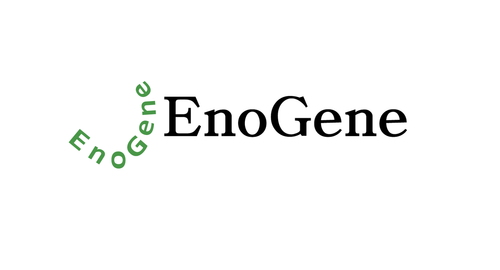Product Description
Caspase-8 Antibody [C15] | 36-164 | ProSci
Host: Mouse
Reactivity: Human
Homology: N/A
Immunogen: Recombinant human caspase-8 (aa 181-478) .
Research Area: Apoptosis
Tested Application: ICC, IP, WB
Application: N/A
Specificiy: Recognizes the p18 subunit of human caspase-8.
Positive Control 1: N/A
Positive Control 2: N/A
Positive Control 3: N/A
Positive Control 4: N/A
Positive Control 5: N/A
Positive Control 6: N/A
Molecular Weight: N/A
Validation: N/A
Isoform: N/A
Purification: >95% (SDS-PAGE)
Clonality: Monoclonal
Clone: C15
Isotype: IgG2b
Conjugate: Unconjugated
Physical State: Liquid
Buffer: Liquid. In PBS containing 10% glycerol and 0.02% sodium azide.
Concentration: 0.5 mg/ml
Storage Condition: Stable for at least 1 year after receipt when stored at -20˚C.
Alternate Name: Apoptotic Cysteine Protease; Apoptotic Protease Mch-5; CAP4; FADD-homologous ICE/ced-3-like Protease
User Note: Optimal dilutions for each application to be determined by the researcher.
BACKGROUND: Procaspase-8 belongs to the family of caspases. Binding of FasL to Fas leads to formation of a receptor complex at the cellular membrane, which was named DISC. The DISC consists of oligomerized receptors, the DD-containing adaptor molecule FADD, procaspase-8, procaspase-10 and c-FLIP. The DISC structure provides a platform for the oligomerization of procaspase-8 that allows two procaspase-8 homodimers to be in the close proximity leading to the initial activation of procaspase-8. At the first cleavage step, the N-terminal p43/p41 and the C-terminal p30 cleavage products are generated. Importantly, these cleavage products already possess catalytic activity. At the second cleavage step, p43/p41 and p30 are processed to p10 and p18, respectively, which leads to the generation of the active caspase-8 heterotetramer (p18/p10) 2.
 Euro
Euro
 USD
USD
 British Pound
British Pound
 NULL
NULL

![Caspase-8 Antibody [C15] Caspase-8 Antibody [C15]](https://cdn11.bigcommerce.com/s-452hpg8iuh/images/stencil/1280x1280/products/553863/761860/porsci_lo__79508.1648973713__97741.1649086280.png?c=2)
![Caspase-8 Antibody [C15] Caspase-8 Antibody [C15]](https://cdn11.bigcommerce.com/s-452hpg8iuh/images/stencil/100x100/products/553863/761860/porsci_lo__79508.1648973713__97741.1649086280.png?c=2)
![Caspase-8 Antibody [C15] Caspase-8 Antibody [C15]](https://cdn11.bigcommerce.com/s-452hpg8iuh/images/stencil/500x659/products/553863/761860/porsci_lo__79508.1648973713__97741.1649086280.png?c=2)
![Caspase-8 Antibody [1G12] Caspase-8 Antibody [1G12]](https://cdn11.bigcommerce.com/s-452hpg8iuh/images/stencil/500x659/products/553878/761875/porsci_lo__79508.1648973713__54805.1649086282.png?c=2)
![Caspase-8 Antibody [3B10] Caspase-8 Antibody [3B10]](https://cdn11.bigcommerce.com/s-452hpg8iuh/images/stencil/500x659/products/553879/761876/porsci_lo__79508.1648973713__90173.1649086282.png?c=2)
![Caspase-2 Antibody [10C6] Caspase-2 Antibody [10C6]](https://cdn11.bigcommerce.com/s-452hpg8iuh/images/stencil/500x659/products/553876/761873/porsci_lo__79508.1648973713__97699.1649086281.png?c=2)
![Caspase-2 Antibody [11B4] Caspase-2 Antibody [11B4]](https://cdn11.bigcommerce.com/s-452hpg8iuh/images/stencil/500x659/products/553877/761874/porsci_lo__79508.1648973713__11340.1649086281.png?c=2)
![Caspase-12 Antibody [12G6] Caspase-12 Antibody [12G6]](https://cdn11.bigcommerce.com/s-452hpg8iuh/images/stencil/500x659/products/553882/761879/porsci_lo__79508.1648973713__49235.1649086282.png?c=2)
![Caspase-11 Antibody [8A5] Caspase-11 Antibody [8A5]](https://cdn11.bigcommerce.com/s-452hpg8iuh/images/stencil/500x659/products/553880/761877/porsci_lo__79508.1648973713__30734.1649086282.png?c=2)
![Caspase-11 Antibody [4E11] Caspase-11 Antibody [4E11]](https://cdn11.bigcommerce.com/s-452hpg8iuh/images/stencil/500x659/products/553881/761878/porsci_lo__79508.1648973713__42135.1649086282.png?c=2)

